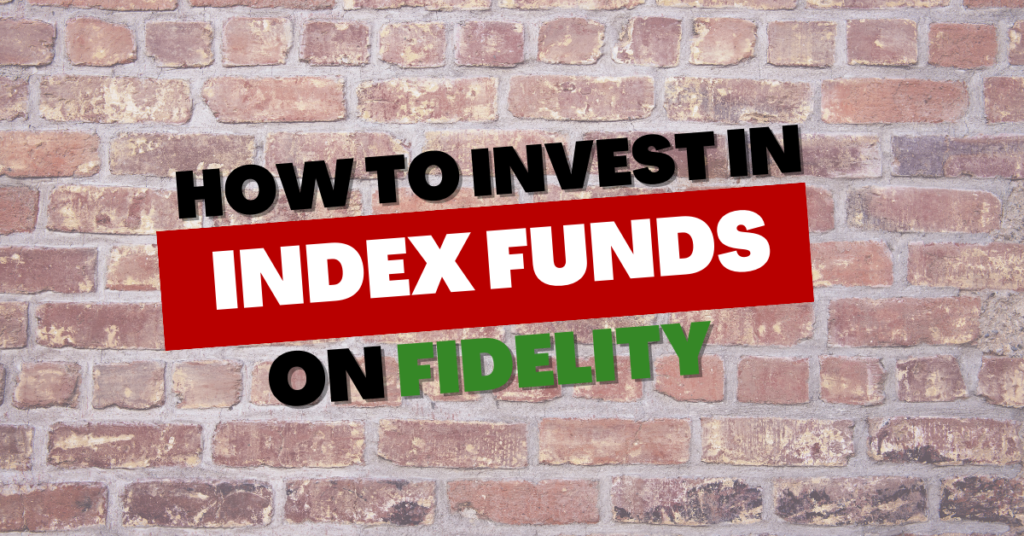Active vs. Passive Investing
I struggled to answer this question when I first started. I found that the key to answering this question depended on how much time and effort I wanted to invest into investing. Active Investing requires the investor to create a portfolio of stocks from scratch. Passive Investing means investing in pre-defined groups of stocks (ETFs, Index Funds, etc.) that someone has already created.
Below will outline key points on Active and Passive Investors to help you decide which investment strategy will work for you.
Key Takeaways
- Active Investor - Investor who researches individual companies and creates their own unique portfolio.
- Passive Investor - Investor with a "Set it and Forget it" mindset. Will Dollar Cost Average into an ETF or Index Fund.
- New Investors need to decide what type of Investor they will be. Neither choice is wrong, but it will depend on what goals you are trying to achieve.
What is the difference between Active vs. Passive Investing?
Remember, every investor had to start somewhere.
Starting at Level Zero, let’s not make any assumptions and start at the basics.
Below are key points between Active vs. Passive Investing.
Active
- Focus on individual Stocks/Companies
- Own multiple Stocks to diversify your portfolio.
- Responsible for Rebalancing.
Passive
- Focus on groups of Stocks (ETFs/Index Funds)
- Own only a few ETFs/Index Funds.
- Fund Managers are responsible for Rebalancing which Stocks are contained in each Fund.
Let’s take a deeper dive into each type of investing.
Active Investing
Active Investing is where an investor will pick individual stocks to create their unique portfolio.
Typically, these types of investors like to have control over exactly where their money is going.
Because Active Investors have all the control over picking exactly what they want, diversifying their portfolios is key. If 50% of their portfolio is in one stock, then the entire portfolio could be in jeopardy of big gains or losses due to the performance of that one stock. The same could be said if they have a large portion of their portfolio in one or two Sectors in the Stock Market.
Occasionally the Active Investor will need to evaluate their portfolio to determine if their weights or share % gets misaligned compared to their original goals.
Why Choose Active Investing?
The biggest reason why an investor would choose to be Active is that they want to beat the Market.
Returning even 1% better returns than the S&P500 could significantly compound wealth over time.
Active Investor’s goal is to beat the Market.
Passive Investing
Passive Investing is where an investor deposits money into an investment account and allocates those funds into high-level ETFs, Index Funds, or Mutual Funds.
The appeal of Passive Investing is that there is a “set it and forget it” mentality.
Simply put, it’s easier.
Unlike Active Investing, a Passive Investor doesn’t need to spend an enormous amount of time researching, screening, and comparing stocks.
It is known that the S&P500 has an average return of 8%-10% annually. Therefore, an investor can select an Index Fund that mimics the S&P500, and they too would see returns of 8%-10% for doing a minimal amount of work.
I will note that there is a variety of ETFs that a Passive Investor can choose from other than the broad “Market”; from Sector Funds (Energy, Healthcare, etc.) to specific Green Energy or Airline Funds. This link will show you more examples of popular Index Funds.
Another benefit of selecting ETFs, is you don’t need to worry about timing the Market. No worrying about “buying low and selling high”. Passive Investors will typically Dollar Cost Average into these funds no matter what the Market conditions are like, either Bull or Bear.
A Passive Investor’s goal is to match the Market with minimal effort.
The downside of Active vs. Passive Investing
Naturally after talking about why you would choose Active vs. Passive Investing, what is the downside to each?
Active Investing Downside
More Time and Effort
When it comes to Active Investing, the word “Active” gives it away. It’s more hands-on. More responsibility is placed on the investor to find and make the right decisions when selecting a stock and at what price they buy and sell the stock.
Can You Beat the Market?
There have been studies that say “Beating the Market” is quite hard for the average investor (and even the professionals). This article discusses how “85% of actively-managed funds fail to beat the S&P 500 over a 5-year period”.
With this being said, it comes down to how much risk an investor is willing to handle. There is a huge reward in beating the Market, but it does come with risk. It comes back to the idea of “time and effort” and doing your due diligence in researching companies.
Passive Downside
Fees
The first downside to Passive Investing, when considering ETFs, is Fees.
Because ETFs are managed by a “person”, that “person” will of course want a cut of the action. If an Index Fund has a 1.0% fee but returns on average 10% each year, well really the Passive Investor only returns 9%.
Nowadays, these fees are small. Like really small. Fidelity’s S&P Index Fund (FXAIX) has a fee of 0.015%. However, this could vary depending on the ETF, or how often the manager of an ETF is changing or updating it (Turnover Rate). For comparison, Fidelity has a “Mega Cap Stock Fund” (FGRTX) which has an Expense Ratio (the fee) of 0.61% and a Turnover Rate of 13%.
Lack of Control
Another downside to Passive Investing is the lack of control over which specific stocks you invest in.
Let’s revisit our Mega Cap Stock Fund Index from Fidelity (FGRTX). To the right, you can see the list of the top 10 Stocks (or Holdings) within this fund. Inside this fund, it contains the largest stocks within the Stock Market. However, if for some reason you don’t want to invest in Oil companies, maybe this Index Fund isn’t right for you; almost 10% of this fund is weighted toward Exxon Mobil.
This is the issue with Index Funds. You may indirectly be investing in companies that you don’t want to but have no choice other than selecting another Fund.

Final Thoughts
As with most investing strategies, it comes down to Risk vs. Reward and Time and Effort.
Both Active and Passive Investing strategies can achieve wealth and financial freedom. After reviewing the above information, hopefully, this can help guide your decision-making.
Thanks for reading!
Leave a comment and we can debate Active vs. Passive Investing.
Disclaimer
Walkingwithaninvestingbeginner.com is not a registered investment, legal or tax advisor or a broker/dealer. All investments / financial opinions expressed by Walkingwithaninvestingbeginner.com are from the personal research and experience of the owner of the site and are intended as educational material. Although best efforts are made to ensure that all information is accurate and up to date, occasionally unintended errors and misprints may occur.



Howdy! Thiis aticle couldn’t be written any better!
Looking through this poost reinds mee of my
previous roommate! He alwzys keot preachihg about this.
I mot certzinly wil forward this article too him.
Prettgy suree he’s going too have a good read. Manyy thaznks
for sharing!
vibration analysis
Vibration Analysis with Balanset-1A: The Ultimate Solution for Dynamic Balancing
Welcome to the world of precision and efficiency in vibration analysis and dynamic balancing. Introducing the Balanset-1A, a portable balancer and vibration analyzer that has been engineered to cater to a wide array of applications, including crushers, fans, mulchers, augers on combines, shafts, centrifuges, turbines, and countless other rotor types. With this state-of-the-art device, you can achieve exceptional levels of performance while ensuring the longevity of your machinery.
Why Choose Balanset-1A for Vibration Analysis?
The Balanset-1A stands out in the market as a dual-channel vibration balancing and analysis device, designed for effortless operation and remarkable accuracy. Whether you’re operating in manufacturing, agriculture, or any other industry requiring dynamic balancing, this instrument is your go-to solution. It offers high precision and advanced functionalities that make vibration analysis straightforward and effective.
Unmatched Features for Comprehensive Vibration Analysis
The Balanset-1A isn’t just a balancer; it’s equipped with an array of features that provide a thorough understanding of your equipment’s vibration conditions. Here’s what makes it a fantastic choice:
Vibrometer Mode: Measure rotational speed accurately to monitor the performance of your equipment.
Phase Measurement: Analyze the phase angle of vibration signals, crucial for diagnosing issues.
FFT Spectrum: Obtain detailed frequency spectrum analysis to understand the roots of vibration.
Overall Vibration Monitoring: Keep tabs on vibration levels over time for maintenance scheduling.
Data Logging: Store and retrieve measurement data for in-depth analysis.
Dynamic Balancing Made Easy
The Balanset-1A excels in dynamic balancing with both single and two-plane balancing capabilities. This versatility means you can effectively address any imbalance issues, ensuring smooth operation of your rotors. Features include:
Polar Graph Visualization: Easily identify where weights need to be added or removed for balance.
Tolerance Calculators: Comply with industry standards like ISO 1940 for acceptable balancing tolerances.
Grinding Wheel Balancing: Specifically designed features for balancing grinding wheels effectively.
Detailed Analysis and Reporting
Georgia’s Balanset-1A not only assists in balancing but also provides charts and graphical representations of vibration patterns to keep you informed:
Overall Charts: Visual summaries of vibration data for quick assessments.
Harmonic Charts: Analysis of harmonic frequencies that may impact performance.
Spectrum Charts: Comprehensive graphical views of frequency spectra for enhanced analysis.
Specifications and Compatibility
When it comes to specifications, the Balanset-1A delivers consistent performance:
Two vibration sensors with optional cable lengths for flexibility.
A dedicated optical sensor for measuring rotational speed.
USB compatibility allows for easy connection to a computer for software integration.
Supports both Imperial and Metric systems, ensuring global usability.
Get Started with Vibration Analysis Today!
The Balanset-1A is priced at €1,751.00, a small investment for the benefits you will reap in operational efficiency and machine longevity. Interested in more than just balancing? Consider becoming a member for exclusive discounts and subscriptions.
Testimonials from Satisfied Customers
Many customers have praised the Balanset-1A for its simplicity and effectiveness. Operators have reported significant improvements in their machinery’s performance and reduced maintenance costs. Achieve peace of mind knowing your machinery runs efficiently with the Balanset-1A vibration analyzer, a trusted companion for any professional who prioritizes quality in their work.
Conclusion: Elevate Your Maintenance Strategy
In summary, vibration analysis is pivotal in ensuring your equipment operates smoothly and avoids costly downtime. The Balanset-1A offers the comprehensive features, flexibility, and ease of use needed for reliable vibration analysis and dynamic balancing. Invest today in the Balanset-1A and take your operational efficiency to the next level!